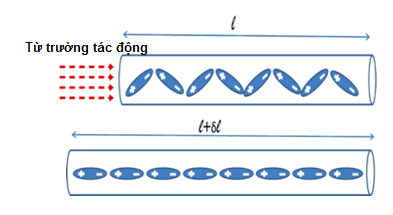Villari effect and metal magnetic memory technique in inspection of magnetic materials under stress
Abstract
Stress concentration is a major cause of metal structure failures. In ferromagnetic materials, it changes the nearby magnetic field, which is called the inverse magnetostrictive effect or Villari effect. The metal magnetic memory (MMM) method, which is developed based on the Villari effect, is considered a novel, advanced, unique non-destructive testing technique allowing identification of stress concentration zones and early prediction of damage potential for ferromagnetic materials. The paper introduces the Villari effect theoretical basis, the development of the MMM technique, and some experimental investigations conducted by the Vietnam Petroleum Institute in which this technique is used to produce test equipment for material structures under stress.
References
[2] A.A.Dubov, “A study of metal properties using the methode of magnetic memory”, Metal Science and Heat Treatment, Vol. 39, pp. 401 - 405, 1997.
[3] Peter Švec Sr., Roman Szewczyk, Jacek Salach, Dorota Jackiewicz, Peter Švec, Adam Bieńkowski, and Jozef Hoško, “Magnetoelastic properties of selected amorphous systems tailored by thermomagnetic treatment”, Journal of Electrical Engineering, Vol. 65, No. 4, pp. 259 - 261, 2014.
DOI: 10.2478/jee-2014-0040.
[4] Dorota Jackiewicz, Maciej Kachniarz, and Adam Bieńkowski, “Investigation of the magnetoelastic Villari effect in steel truss”, Recent Global Research and Education: Technological Challenges. Springer International Publishing, 2017, pp. 63 - 70.
[5] D.C.Jiles, “Theory of magnetomechanical effect”, Journal of Physics D: Applied Physics, Vol. 28, No. 8, pp. 1537 - 1546, 1995.
[6] Anatoly A. Dubov and Sergey Kolokolnikov, “Technical diagnostics of equipment and constructions with residual life assessment using the method of metal magnetic memory", 17th World Conference on Nondestructive Testing, Shanghai, China, 25 - 28 October, 2008.
[7] Caoyuan Pang, Jianting Zhou, Ruiqiang Zhao, Hu Ma, and Yi Zhou, “Research on internal force detection method of steel bar in plastic and yielding stage based on metal magnetic memory”, Materials, Vol. 12, No. 7, pp. 1167, 2019. DOI: 10.3390/ma12071167.
[8] Guo Pengju, Chen Xuedong, Guan Weihe, Cheng Huayun, and Jiang Heng, “Effect of tensil stress on the variation of magnetic field of low-alloy steel”, Journal of Magnetism and Magnetic Materials, Vol. 323, No. 20, pp. 2474 - 2477, 2011. DOI: 10.1016/j.jmmm.2011.05.015.
[9] Shangkun Ren and Xianzhi Ren, “Studies on law of stress-magnetization based on magnetic memory testing technique”, Journal of Magnetism and Magnetic Materials, Vol. 449, pp. 165 - 171, 2018. DOI: 10.1016/j.jmmm.2017.09.050.
[10] ASM International, Atlas of Stress – Strain Curves, 2nd edition. The Materials Information Society, 2002.
[11] Dong Lihong, Xu Binshia, Dong Shiyuna, Chen Qunzhic, and Wang Dan, “Variation of stress-induced magnetic signals during tensile testing of ferromagnetic steels”, NDT&E International, Vol. 41, No. 3, pp. 184 - 189, 2008. DOI: 10.1016/j.ndteint.2007.10.003.
[12] D.L.Atherton, “Stress-shadow magnetic inspection technique for far-side anomalies in steel pipe”, NDT International, Vol. 16, No. 3, pp. 145 - 149, 1983. DOI: 10.1016/0308-9126(83)90037-8.
[13] Stephen G.H.Staples, “Using magnetostriction and the villari effect to detect anomalies”, PhD Transfer Report, 2012.

1. The Author assigns all copyright in and to the article (the Work) to the Petrovietnam Journal, including the right to publish, republish, transmit, sell and distribute the Work in whole or in part in electronic and print editions of the Journal, in all media of expression now known or later developed.
2. By this assignment of copyright to the Petrovietnam Journal, reproduction, posting, transmission, distribution or other use of the Work in whole or in part in any medium by the Author requires a full citation to the Journal, suitable in form and content as follows: title of article, authors’ names, journal title, volume, issue, year, copyright owner as specified in the Journal, DOI number. Links to the final article published on the website of the Journal are encouraged.




